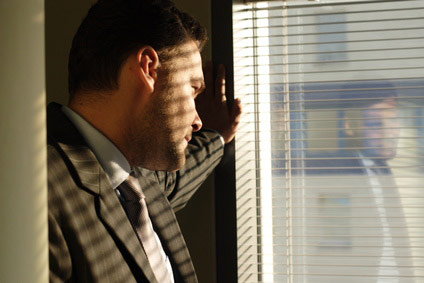What’s the connection of vitamin D and fatigue or vitamin D for depression? Read on to find out.
Vitamin D Is In The News A Lot
In the last few years there’s been a lot of talk and media attention directed to the topic of vitamin D.
Twenty years ago, it was thought that high levels of vitamin D were associated with toxicity – after all, vitamin D is fat-soluble and anything you take in a supplement could overdose you!
New Technology Created New Vitamin D Test
Now we know that about three-fourths of the population suffers from this nutrient deficiency and the only way to find out if you have it is to get a simple blood test.
The blood tests a “normal” range of 30-100 ng/dl but 60-75 is considered ideal.
 Beware Of Vitamin D
Beware Of Vitamin D
The fact is that many people of all ages have been taught that the sun was our worst enemy – and as a result, went into deficiency levels of vitamin D.
A chronic vitamin D deficiency results in depression, depressed immune system, osteoporosis, and muscle weakness – which is fatigue.
Low levels also cause high blood pressure, heart disease, and are associated with rheumatoid arthritis, multiple sclerosis, and type 1 diabetes – all diseases that are generally seen in people over the age of 40.
 The Vitamin D And Fatigue Connection
The Vitamin D And Fatigue Connection
So how is it that a deficiency can cause fatigue? Well, think about it for a minute. What happens when you’re depressed? You’re fatigued – big time!
You have no passion for life or any of your favorite hobbies anymore. Whenever friends call to go out with you, you’re too tired to do anything. Whenever your moods are low, you can expect fatigue.
And this is the connection of vitamin D and fatigue or vitamin D for depression and fatigue. It’s real.
Vitamin D And Osteoporosis
 A vitamin D deficiency also causes osteoporosis. Let’s think about this one for a minute. What happens when the bones are porous?
A vitamin D deficiency also causes osteoporosis. Let’s think about this one for a minute. What happens when the bones are porous?
The person has no strength in the muscles and has a hard time even standing up straight, walking and certainly with running. It’s not good.
Having no strength in the muscles means weakness – and when you want to move fast, there’s no strength to do so. When you put out, you can’t put out. You’re too tired and too fatigued.
Vitamin D And Immune System Function
And what about what happens when there’s a depressed immune system?
Well a depressed immune system leads to more infections and with every infection there’s something that happens in the body that’s pretty unique.
What happens is that the white blood cells pump out chemical messengers into the bloodstream when you have an infection to slow you down and make you tired! Fatigue sets in.
This is easily confirmed by just thinking what happened the last time you were sick with a cold or the flu.
Is there a connection of vitamin D deficiency and fatigue? Absolutely!
 What Will You Do About Vitamin D Deficiency?
What Will You Do About Vitamin D Deficiency?
So the big thing to think about is what are you going to do about it.
1. Don’t Guess At Your Levels
Do get a blood test to determine where your vitamin D levels are. Being at the bottom of the normal range isn’t good enough.
2. Change Your Diet?

You can try getting vitamin D from food sources but if you don’t like herring or salmon / salmon bones or cod liver oil, getting enough just isn’t going to happen.
Vitamin D content of milk is only about 100-400 IU, and supplement companies won’t put any more than 400 to 600 IU in your daily requirement.
3. Deficiency Needs Intervention
If you’re deficient, do you have any idea how much you will need per day?
Some nutritionists start with a hefty dose of 10,000 IU per day for about a month, then cut back to 4000 or 5000 IU a day after that.
They suggest retesting after three months. As you can see, it takes a lot to get over a deficiency.
And if your doctor gives you a vitamin D pill, it will probably be 50,000 IU and you’ll take it every week for12 weeks.
Doctors are finding that giving patients higher amounts is better for those with joint pain. One source with all this information can be found at J Oncol Pract. 2010 March; 6(2): 97–101.
Of course, you could go outside and get sunshine, you say.
Sure, you could. If your whole body is exposed to the sunlight to the point just before where you would be causing any redness, you’ll only get about 10,000 IU.
 Vitamin D Deficiency Symptoms
Vitamin D Deficiency Symptoms
Symptoms of a vitamin D deficiency according to the medical literature include:
- Fatigue (bingo – that is what we were looking for)
- Inability to fall asleep at night
- Back pain and musculoskeletal pain
- Depression
- Weakness in the muscles
- Headache
And there’s one more that may surprise you – hair loss! Is this why many of us lose our hair as we age? Could it be that simple?
What’s important is to get your vitamin D levels checked as soon as possible if you are experiencing fatigue.
Look for the vitamin D and fatigue connection and the vitamin D and depression connection yourself.
 For more info on how to finally eliminate tiredness, check out the ebook program called the End Tiredness Program.
For more info on how to finally eliminate tiredness, check out the ebook program called the End Tiredness Program.
It’s an easy-to-understand program that takes you step-by-step while holding your hand and allows you to finally beat tiredness. You won’t regret it.

